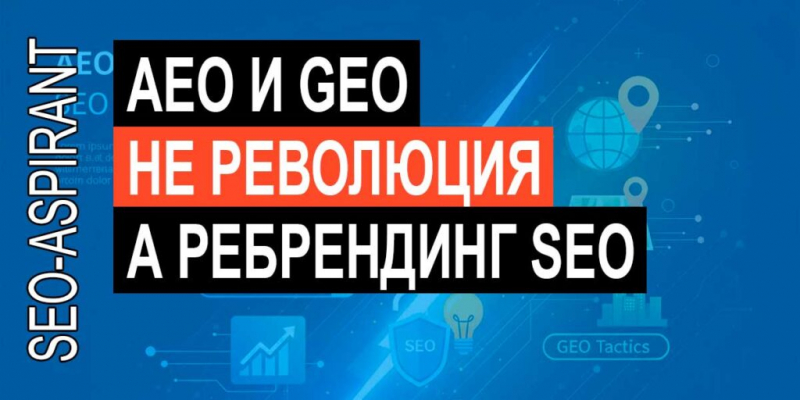GEO/AEO is being criticized by SEO experts, who claim that at best it’s just SEO and at worst it’s unconfirmed lies. Are the SEO experts right, or are they just defending their territory?
Bing recently published a guide on visibility in artificial intelligence search engines, which provides a great opportunity to check whether optimization for AI recommendations differs from traditional SEO methods.

- Splitting content into fragments (chunking)
- Headings, meta descriptions, and H1
- Lists and tables
- Pairs of questions and answers
- Semantic purity of the text as the basis of relevance
- Bing recognizes traditional SEO
- AI optimization = SEO
Content fragmentation (chunking)
Some AEO/GEO optimizers claim that it is important to write content in fragments because this is how AI and LLMs break down content pages into fragments.
The Bing AI Optimization Guide, written by Krishna Madhavan, Bing’s Chief Product Manager, reflects the concept of fragmentation.
Madhavan from Bing writes:
“AI assistants don’t read a page from top to bottom like a human does. They break down the content into smaller, easier-to-use pieces, a process called parsing. It’s these modular pieces that are ranked and assembled into responses.”
Some SEO experts tend to forget that breaking content into fragments is not new. This technology has been around for at least five years.
Google has introduced its ranking algorithm for fragments (passages) back in 2020. The algorithm splits a web page into sections to understand how relevant the page and its sections are to the search query.
Google states:
“The snippet ranking system is an intelligent algorithm designed to analyze individual sections (or ‘snippets’) of a web page in order to assess its relevance to a search query.”
In its announcement from 2020, Google described the ranking of fragments (passages) as follows:
“Very specific queries can be the most difficult to rank correctly, because sometimes a single sentence answering your question can be hidden deep in a web page. We recently made a breakthrough in ranking, and we can now better understand the relevance of specific passages. By understanding the passages in addition to the relevance of the entire page, we can find the needle in the haystack that you’re looking for. This technology will improve 7% of search queries in all languages as it is implemented worldwide.”
As for snippet targeting, any SEO professional who has optimized content for Google’s featured snippets can attest to the importance of creating snippets that directly answer questions. This has been a fundamental part of SEO since at least 2014, when Google introduced featured snippets.
Headings, meta descriptions, and H1
Bing’s AI ranking guide also states that descriptions, headings, and titles are important signals for AI systems.
There’s no need to emphasize that descriptions, subheadings, and titles are fundamental elements of SEO. So, again, there’s nothing unique about optimizing these HTML elements for AEO/GEO.
Lists and Tables
Bing recommends using bulleted lists and tables as a way to easily convey complex information to users and search engines. This approach to organizing data is similar to the advanced SEO technique known as ambiguity resolution. Ambiguity resolution is about making the meaning and purpose of a web page as clear as possible to reduce its ambiguity.
To make a page less ambiguous, you can use semantic HTML to clearly indicate which part of the web page is the main content (MC in Google’s website quality rating guide terminology) and which part of the web page is an advertisement, navigation, sidebar, or site footer.
Another form of ambiguity resolution is the proper use of HTML elements, such as ordered lists (OL), and the use of tables to convey tabular data, such as a comparison of products or a schedule of dates and times for an event.
The use of HTML elements (such as H, OL, and UL) gives structure to the information on a page, which is why it is called structured information.
Structured information and structured data are two different things.Structured information is located on the page and is visible in the browser and for crawlers. Structured data is metadata that only the bot can see.
There are studies that show that structured information helps artificial intelligence agents understand the meaning of a web page, so it is important to recognize that structured information is something that is particularly useful for AI agents.
Question-and-answer pairs
Bing recommends using Q&A, which are pairs of questions and answers that artificial intelligence can use directly.
Madhavan from Bing writes:
“Direct questions with clear answers reflect how people perform searches. Assistants can often use these pairs, word for word, in AI-generated responses.”
This is a combination of snippet ranking and SEO best practices for writing featured snippets, where you ask a question and provide an answer. Creating an entire question-and-answer page is a risky approach, but if it seems useful and effective, it may be worth considering.
Keep in mind that Google’s systems consider content that lacks unique information to be spam. Google also considers content created specifically for search engines to be of low quality.
Anyone who plans to write questions and answers on a web page for the purpose of AI SEO should first consider whether it will be useful for people and carefully consider the quality of the question-answer pairs. Otherwise, it will simply be a page created for search engines.
Semantic purity of the text as the basis of relevance
Bing also recommends semantic clarity. This is also important for SEO.
Madhavan emphasizes:
“Write considering the intent, not just the keywords. Use formulations that directly answer users’ questions.
Avoid vague language. Terms like “innovative” or “eco-friendly” don’t mean much without context. Instead, base your claims on measurable facts.
Add context. A product page should say “42 dB dishwasher designed for open kitchens” rather than just “quiet dishwasher.”
Use synonyms and related terms. This enhances the meaning and helps the AI to link concepts (silence, noise level, noise rating).
They also advise against using abstract words like “next generation” or “cutting edge” because they don’t really say anything. This is a very serious problem with AI-generated content because the chatbot tends to use abstract words that can be completely removed without changing the meaning of the sentence or paragraph.
Finally, they advise against using decorative symbols, which is a good tip. Decorative symbols, such as the “→” arrow, do not actually carry any semantic information.
All of these tips are good. They are useful for SEO, they are useful for AI, and like all other AI-SEO techniques, there is nothing specifically AI-related about them.
Bing Recognizes Traditional SEO
It’s interesting that Bing’s guide on improving AI ranking explicitly acknowledges the importance of traditional SEO.
Madhavan from Bing writes:
“Call it GEO, AIO, or SEO, one thing remains true: visibility is everything. In today’s AI-powered search landscape, it’s not just about being found but also about being chosen. And it all starts with content.
…Traditional SEO fundamentals still matter.”
This statement confirms that, despite the new terminology surrounding AI-powered search, Bing views AI-powered result optimization as an evolution of existing SEO fundamentals rather than a completely new optimization process.
This confirms that relevance, content quality, and accuracy remain key factors in AI search visibility.
AI Optimization = SEO
Google and Bing have been using AI in traditional search for about a decade. AI-powered search ranking is not a new concept. Therefore, it is not surprising that the best SEO practices align with AI response ranking. The same considerations parallel those of users and how they interact with content.
Many SEO professionals are still stuck in the ten-year-old paradigm of keyword optimization, and these methods of eliminating ambiguity and improving accuracy may be new to them. Therefore, it may be a good thing that the SEO community is engaging in these discussions about AEO/GEO, as it provides them with an opportunity to learn about many of these content optimization concepts and understand that there is no such thing as AEO/GEO; it is still simply SEO.
Recommendation of the month:

